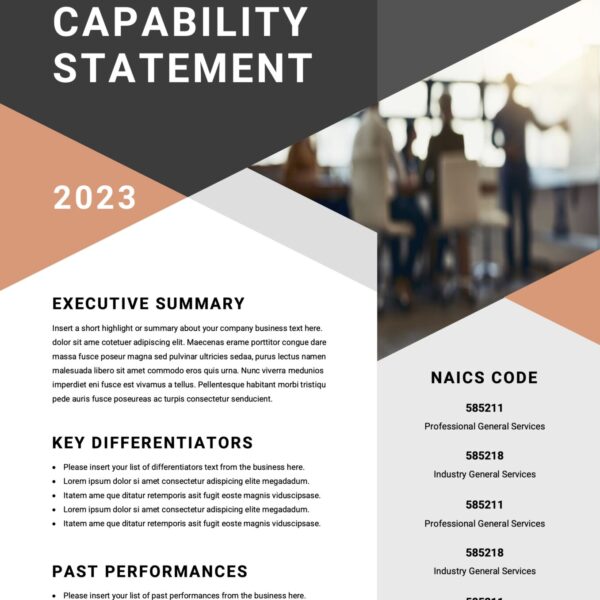
All Posts, Web Design
 We’ve all been there. Ball drops in Time Square, and a few hours later we’re promising to change certain parts of our lives. Well as a designer, we have new years ambitions too. I’ve comprised a short list of some key ones we should all take a bit more seriously for 2011 and plan to accomplish as the weeks and months start.
We’ve all been there. Ball drops in Time Square, and a few hours later we’re promising to change certain parts of our lives. Well as a designer, we have new years ambitions too. I’ve comprised a short list of some key ones we should all take a bit more seriously for 2011 and plan to accomplish as the weeks and months start.
1) Utilize a contract with all customers. This should be a no brainer, but I can personally tell you times where I’ve skipped it because I had “good vibes” about a prospective client turned nightmare. Not only does a contract protect you as a designer, but also your clients. Everyone understand their rights and ownership to data and content. Among all else, it should prevent any legal activity should a situation escalate those heights.
2) Hit the books. You know you’ve reached your comfort zone when you can’t remember the last time you read a book about your trade or a known trade leader. New techniques, programs, and such are coming out just about every week. If you’re not “in the know” you could be missing out on ways to make your life easier, more prosperous, and save some headaches.
3) Socialize. If you’re still a one man show, and haven’t met anyone else outside of your neighbor and cousins to bounce ideas off of, you’re missing out. Most other designers I’ve met happen to be the best support group I could ever ask for. In terms of knowledge, experience, and collective though processes all at your disposal and for FREE. All that’s required is that you pitch in and help whenever they need it. Great friendships can be birthed out of socializing too. Not just online, but offline too.
4) Marketing your best assets. If you’re a web designer and your the best in your area at Joomla or WordPress, you need to get the word out around your community that you’re the authority on these. Graphic design logo’s are your thing and no one else holds a candle in your local market? Well it means nothing if people can’t find you. And even worse if those that do can’t refer people to your website when you don’t have one. Get out there to networking events, trades hows, and even your local media outlets. You’d be surprised if you showed up and proved yourself.
5) Update your portfolio. Sure this sounds redundant, but I bet you slap your head when you think of the last time you really made some sensible changes to your dossier. It’s mainly because we get busy. Going from one project to the next, or juggling multiple projects along with life, we tend to place our own work on the shelf for “a later time.” That time never comes unless you make time for it. So schedule in a weekend to update your website, media kit, business card, email signature, brochure, whatever. What good is it to new prospect clients to hear you talk about your excellent work and you can’t show your newest work.
6) Get feedback. Your doomed to repeat past mistakes if you never learn from them. And who better to tell you, than your current clients. Poll them, email them, or survey them. Get them to tell you how they feel/felt about your services. Take what they say and look at it from an outsider perspective. Maybe get a colleague to weigh in. Also look back a year from now at some of your work and gauge that against what you are doing now. There should be notable differences and sizable improvements. Time, technicality, price, value, etc.
7) Execute. You’ve got plan, you’ve got goals, you’ve got great ideas all floating around in your head. Put them on paper, put a time stamp and date them on when they should be completed. Sometimes we’re our own biggest enemies when it comes to our advancements. No more procrastinating on those good ideas, even if they don’t all lead to the heights as a Facebook. You’ll never know if you don’t execute those ideas.
Have some other resolutions you’ve come up with? I’d love to hear them and discuss further. Comment back and lets here some of those ideas. Happy New Year everyone!
All Posts, Web Design
 There is something to be said about the designers that have been around for more than 10 years. They’ve been through the dot com burst and the bust, but a lot of them are still around to this day. Still creating new user experiences great cutting edge designs to this day. How do they do it? How do the newbies to the scene learn and understand the old school ways to then gravitate to the new school tactics? In a word; growth. Or I should say constant growth.
There is something to be said about the designers that have been around for more than 10 years. They’ve been through the dot com burst and the bust, but a lot of them are still around to this day. Still creating new user experiences great cutting edge designs to this day. How do they do it? How do the newbies to the scene learn and understand the old school ways to then gravitate to the new school tactics? In a word; growth. Or I should say constant growth.
I think year ago there was a defined line between web designers, developers, and graphic designers. Projects were done in a sort of assembly line of steps where a project was piped through stages. Now a days you may find a graphic designer turned web designer, or software developer turned web developer in the same person. As time changed, the economy changed, and the requirements changed. So they adapted.
Staying inspired:
This is a good one because if you can find inspiration while working on a project, chances are you’ll be able to lay everything out in good enough detail that you’ll easily be able to plug in the necessary work in a short period of time. At times, inspiration may come at the rarest times of day or night. If you’ve been around long enough, these bursts of influence aren’t to be taken lightly!
Creating and sticking to a habit:
A seasoned freelancer will have their typical day scheduled out in advance. They know what their doing or planning to do hours or days prior to that day. Phone calls, email checking, researching, book reading, coffee breaks, lunch, etc. Each part of their day is productive and in some ways scripted. Otherwise they run the risk of falling behind on projects, losing clients, and eventually loosing business.
Challenging your expertise:
Pushing some of your personal or comfort boundaries is a must. If you spend too much time doing the casual and normal projects you’ve been doing for the past few years and haven’t embarked on anything new in terms of skill or technology, you run the risk of falling behind. There may be easier or simpler ways of drafting your designs, or coding your work that could save you time and effort.
Gauging your past projects:
You should be able to look back on your previous work from a year ago, and now and see a big difference of improvement. It’s a great feeling by the way. To say to yourself; “Wow, I came a long way from that old project!” If you’re not, spend some time reading some newer books within your trade. Network with some other freelancers in your trade both locally and online. Also purchase a few subscriptions to some trade magazines; they’re worth the few minutes of reading in your downtime.
Do you have some tactics that you use(d) in your professional career that you’d like to add? We’d love to hear it, so type your comments below.
All Posts, Web Design
 These days creating a website is cheap and fast. The learning curve has also been sharply reduced. But most of these advancements are due to software that takes the technicality out of the true form. What I’ve highlighted below are some flags or concerns that you should be aware of before setting up a website for yourself or business.
These days creating a website is cheap and fast. The learning curve has also been sharply reduced. But most of these advancements are due to software that takes the technicality out of the true form. What I’ve highlighted below are some flags or concerns that you should be aware of before setting up a website for yourself or business.
Hiring a Web Designer and/or Web Developer
This is crucial because either way it is going to cost you some money and you want to make sure you get a good return on your investment. Obviously you’re going to get what you pay for, and that’s the good part – knowing the difference between a web designer and a web developer? A web designer will typically design the layout, colors, form, and graphics of your site. A web developer will take those plans and actually build your site, code it, test it, and launch it. These days the two professions are sometimes combined in one person or firm. Also be sure to check references or at least their portfolio of work.
Using a Free Service or Web Platform
Websites like WordPress.org or Homestead.com are some of the more popular names for online website creation. There are many more that range from free to premium. What you want to be careful with is that you get what you pay for. Free sites are great for starter sites, but lack the freedom for creativity. When I say freedom I mean, freedom to choose where to place your logo, having a different layout on each page as apposed to the same flow on you home page, about page, and services page. Or the freedom to choose any color you want for your background, font, or columns.
Provider and Client Communication
If you do hire a professional, be sure to keep in regular communication with them. One of the main complaints most designers have is a client that does not keep in touch. Enthusiasm is always high at the start of any project, and ideas are fluent. But after a few weeks, communication (on both sides) starts to decrease. Even worse is when the project is not delivered on schedule or it does not resemble the original blueprint. All of these problems can be dealt with and avoided with proper communication between the client and company.Ask lots of questions. Don’t be shy or reluctant to ask something that you’re not clear about. After all, you did hire this firm to do a specific job for you and you are paying them to do it!
Advice From All The Wrong Places
Sure getting an opinion from your mother in Florida is nice from time to time, but she’s no designer. Nor is your best friend that works in construction. The mechanics, design, and functionality of a website are best reviewed by a qualified field related professional. Be sure to get the right advice from the right people e.g. friends who have used a similar platform, or who have hired the designer that you’re planning to use. Also, ask your web designer to show you as many samples as needed to make you feel comfortable about your project.
Getting What You Paid For
This is a lesson learned in just about any field of business. If you’re on a shoestring budget, you should consider a minimalist website. A good firm should be able to build one to suit your current budget. However a better one will create a site for you that can grow as your budget grows. And the adverse of this is paying too little and expecting too much. As the saying goes “the proof is in the pudding.”
So if you’re in the market for a new website, consider the potential problem areas that might cause difficulty down the road, and be sure to do your homework before you sign the contract. You can never be too prepared!
What are some other issues you have encountered in creating or designing your website?
Web Design

Unless you’ve been diligently dodging the news of late, you are fully aware of the rants and complaints to online user privacy. Specifically from users and former users of Facebook. I’m not going to get into that too much because it isn’t necessary and I may post some links to articles you can read if you want.
Here’s the thing you really should be paying attention to; your digital profile. As a web designer and social media user, my information is all over the place. Most of which I knowingly posted and signed up to share. Some of which I did not particularly care to have shared about or past my set restrictions. As I Google my own name I find interesting websites that have farmed my information and added to their sites. Some relevant, and some not. What’s becoming a bit alarming to me is how my “digital profile” is starting to look like a social security number.
Why is this alarming? Well because if you’re one of the millions out of work and submitting your resume online to many different job forums, and career sites, your information isn’t always nested and secured within those sites. So yes, employers are searching for you by name and through Facebook, or Yahoo, and other social sites and engines. And yes they’re finding information. We all know banks check your credit history, but should they be allowed to follow your online history? What TV shows you “liked”? What web forums your signed up to (gun, porn, racial, gaming, etc). Even parents are getting into this by checking out their neighbors, or they’re children’s friends parents, or potential babysitter.
Remember cookies? Sure you do. Just as much of a pain that they were before, they are again now. Through these cookies websites like Facebook can see where you’ve been and associate that with your Facebook profile. They then use that to calculate the best advertisements you’d be interested in to try and pitch to you. Smart right? Haven’t you noticed the plethora of ads in the free apps on your smartphone? Those ads will be getting even smarter soon.
Moral of the story is to check out your online profile. There are sites that you can request to remove your

 We’ve all been there. Ball drops in Time Square, and a few hours later we’re promising to change certain parts of our lives. Well as a designer, we have new years ambitions too. I’ve comprised a short list of some key ones we should all take a bit more seriously for 2011 and plan to accomplish as the weeks and months start.
We’ve all been there. Ball drops in Time Square, and a few hours later we’re promising to change certain parts of our lives. Well as a designer, we have new years ambitions too. I’ve comprised a short list of some key ones we should all take a bit more seriously for 2011 and plan to accomplish as the weeks and months start.




